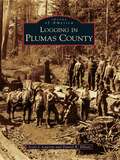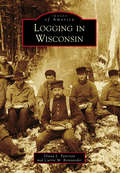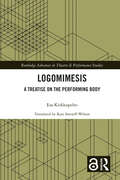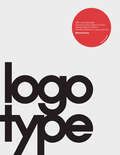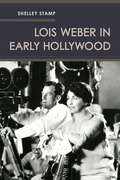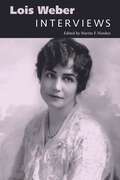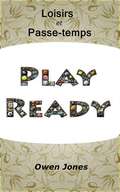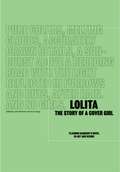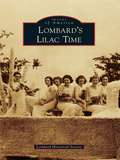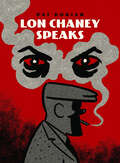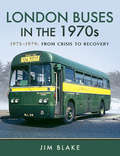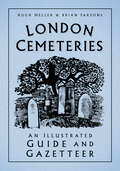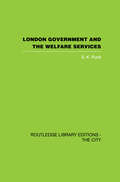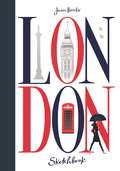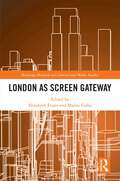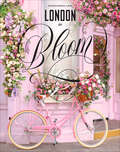- Table View
- List View
Logging in Plumas County
by Scott J. Lawson Daniel R. ElliottLocated within the northern Sierra Nevada mountain range, the forests of Plumas County were once seen as a source of endless timber. Lumber was needed during the Gold Rush for water flumes, mine timbers, and an array of buildings. While timber was abundant, the abilities of the early settlers to harvest, transport, and mill the logs were often very limited. Markets remained relatively local throughout the second half of the 19th century until the completion of the Western Pacific Railroad in 1909. This sparked a new rush of industry into the region. Vast tracts of untapped Plumas County timber were bought up by speculators, and many sawmills were erected. Logging in the western United States moved from animal power to steam engines to internal combustion in the space of about 50 years. While Plumas County's lumber industry was reflective of these developments, it also found its own identity as a timber-producing region that was nearly unequaled.
Logging in Wisconsin (Images of America)
by Carrie M. Ronnander Diana L. PetersonWisconsin was the perfect setting for the lumber industry: acres of white pine forests (acquired through treaties with American Indians) and rivers to transport logs to sawmills. From 1840 to 1910, logging literally reshaped the landscape of Wisconsin, providing employment to thousands of workers. The lumber industry attracted businessmen, mills, hotels, and eventually the railroad. This led to the development of many Wisconsin cities, including Eau Claire, Oshkosh, Stevens Point, and Wausau. Rep. Ben Eastman told Congress in 1852 that the Wisconsin forests had enough lumber to supply the United States “for all time to come.” Sadly, this was a grossly overestimated belief, and by 1910, the Wisconsin forests had been decimated. Logging in Wisconsin explores the 70 years when logging ruled the state, covering the characters who worked in forests and on rivers, the tools they used, and the places where they lived and worked.
Logistische Netzwerke
by Wolf-Rüdiger BretzkeDer Autor stellt industriespezifische und branchenübergreifende logistische Designprinzipien für erfolgreiche Netzmodelle in den Bereichen Industrie, Handel und Transportdienstleistung vor. Für die 2. Auflage wurde u. a. die Analyse zum Thema Nachhaltigkeit vertieft, der Autor hat außerdem mit zusätzlichen Fallbeispielen und Schaubildern die Verständlichkeit verbessert und widmet den methodologischen Grundlagen jetzt ein eigenes Kapitel. Dadurch werden Wissenschaft und Praxis noch stärker miteinander verzahnt.
LogoLounge 9
by Emily Potts Bill GardnerTHE NINTH BOOK IN THE LOGOLOUNGE SERIES once again celebrates expert identity work by notable designers and up-and-coming talents from around the world. This edition's far-reaching collection offers inspiration, insight, and an indispensable reference tool for graphic designers and their clients. Masterminded by Bill Gardner, president of Gardner Design, the LogoLounge.com website showcases the latest international logo creations.LOGOLOUNGE vol. 9 PRESENTS THE 2,000 BEST LOGO DESIGNS as judged by a select group of identity designers and branding experts. Logos are organized into 20 visual categories for easy reference. Within each section, case studies allow a closer look at designs from diverse firms such as Hornall Anderson, Lippincott, Tether, Von Glitschka Studios, OCD and more. Each story details the logo design journey, from concept to finish. LOGOLOUNGE vol. 9 is the definitive logo resource for graphic designers, brand managers and start-ups looking for ideas and inspiration.
LogoLounge 9: 2,000 International Identities by Leading Designers
by Bill GardnerTHE NINTH BOOK IN THE LOGOLOUNGE SERIES once again celebrates expert identity work by notable designers and up-and-coming talents from around the world. This edition's far-reaching collection offers inspiration, insight, and an indispensable reference tool for graphic designers and their clients. Masterminded by Bill Gardner, president of Gardner Design, the LogoLounge.com website showcases the latest international logo creations.LOGOLOUNGE vol. 9 PRESENTS THE 2,000 BEST LOGO DESIGNS as judged by a select group of identity designers and branding experts. Logos are organized into 20 visual categories for easy reference. Within each section, case studies allow a closer look at designs from diverse firms such as Hornall Anderson, Lippincott, Tether, Von Glitschka Studios, OCD and more. Each story details the logo design journey, from concept to finish. LOGOLOUNGE vol. 9 is the definitive logo resource for graphic designers, brand managers and start-ups looking for ideas and inspiration.
Logomimesis: A Treatise On The Performing Body (Routledge Advances in Theatre & Performance Studies)
by Esa KirkkopeltoHow can the dichotomy between body and language be overcome by means of the performing arts? What does the art of performing contribute to philosophical, ethical, and political thinking today?This book is a study of the body and language on the stage. Inspired by contemporary artistic research and performance philosophy, Esa Kirkkopelto proposes a new understanding of embodiment that has no direct counterpart in existing philosophies of the body, in natural science, or in everyday experience. The way a performer imagines their body in performance breaks with body–language dichotomies, so language and body can be conceived as co-original phenomena, beyond their anthropomorphic framing. Once we recognize the native relationship between body and language, we can acquire an evolutive perspective which reaches beyond ontological or transcendental paradigms, towards a more linguistic and corporeal coexistence of diverse beings.This book shows how radically different the universe appears when conceived through the performing body. It addresses artists and philosophers alike.
Logotype (Pocket Editions)
by Michael EvamyLogotype is the definitive modern collection of logotypes, monograms and other text-based corporate marks. Featuring more than 1,300 international typographic identities, by around 250 design studios, this is an indispensable handbook for every design studio, providing a valuable resource to draw on in branding and corporate identity projects.Logotype is truly international, and features the world’s outstanding identity designers. Examples are drawn not just from Western Europe and North America but also Australia, South Africa, the Far East, Israel, Iran, South America and Eastern Europe. Contributing design firms include giants such as Pentagram, Vignelli Associates, Chermayeff & Geismar, Wolff Olins, Landor, Total Identity and Ken Miki & Associates as well as dozens of highly creative, emerging studios.Retaining the striking black-and-white aesthetic and structure of Logo (also by Michael Evamy) and Symbol, Logotype is an important and essential companion volume.
Logotype: The Reference Guide To Symbols And Logotypes (corporate Identity Book, Branding Reference For Designers And Design Students) (Mini Ser.)
by Michael EvamyLogotype is the definitive modern collection of logotypes, monograms and other text-based corporate marks. Featuring more than 1,300 international typographic identities, by around 250 design studios, this is an indispensable handbook for every design studio, providing a valuable resource to draw on in branding and corporate identity projects.Logotype is truly international, and features the world’s outstanding identity designers. Examples are drawn not just from Western Europe and North America but also Australia, South Africa, the Far East, Israel, Iran, South America and Eastern Europe. Contributing design firms include giants such as Pentagram, Vignelli Associates, Chermayeff & Geismar, Wolff Olins, Landor, Total Identity and Ken Miki & Associates as well as dozens of highly creative, emerging studios.Retaining the striking black-and-white aesthetic and structure of Logo (also by Michael Evamy) and Symbol, Logotype is an important and essential companion volume.
Lois Weber in Early Hollywood
by Shelley StampAmong early Hollywood's most renowned filmmakers, Lois Weber was considered one of the era's "three great minds" alongside D. W. Griffith and Cecil B. DeMille. Despite her accomplishments, Weber has been marginalized in relation to her contemporaries, who have long been recognized as fathers of American cinema. Drawing on a range of materials untapped by previous historians, Shelley Stamp offers the first comprehensive study of Weber's remarkable career as director, screenwriter, and actress. Lois Weber in Early Hollywood provides compelling evidence of the extraordinary role that women played in shaping American movie culture. Weber made films on capital punishment, contraception, poverty, and addiction, establishing cinema's power to engage topical issues for popular audiences. Her work grappled with the profound changes in women's lives that unsettled Americans at the beginning of the twentieth century, and her later films include sharp critiques of heterosexual marriage and consumer capitalism. Mentor to many women in the industry, Weber demanded a place at the table in early professional guilds, decrying the limited roles available for women on-screen and in the 1920s protesting the growing climate of hostility toward female directors. Stamp demonstrates how female filmmakers who had played a part in early Hollywood's bid for respectability were in the end written out of that industry's history. Lois Weber in Early Hollywood is an essential addition to histories of silent cinema, early filmmaking in Los Angeles, and women's contributions to American culture.
Lois Weber: Interviews (Conversations with Filmmakers Series)
by Martin F. NordenLois Weber (1879–1939) was one of early Hollywood’s most successful screenwriter-directors. A one-time Church Army worker who preached from street corners, Weber began working in the American film industry as an actress around 1908 but quickly ascended to the positions of screenwriter and director. She wrote, directed, starred in, edited, and titled hundreds of movies during her career and is believed to be the first woman to direct a feature film. At the height of her influence, Weber used her medium to address pressing social issues such as birth control, abortion, capital punishment, poverty, and drug abuse. She gained international fame in 1915 with her controversial Hypocrites, a complex film that featured full female nudity as part of its important moral lesson. Her most famous film, Where Are My Children?, was the Universal studio’s biggest box-office hit the following year and played to enthusiastic audiences around the globe. These productions and many others contributed to her standing as a truly world-class filmmaker.Despite her many successes, Weber was pushed out of the business in the 1930s as a result of Hollywood’s institutionalized sexism. Shoved into the corners of film history, she remained a largely forgotten figure for decades. Lois Weber: Interviews restores her long-muted voice by reprinting more than sixty items in which she expressed her views on a range of filmic subjects. The volume includes interviews, articles that Weber wrote, the text of a speech she gave, and reconstructed conversations with her Hollywood coworkers. Lois Weber: Interviews provides key insights into one of our first great writer-directors, her many films, and the changing business in which she worked.
Loisirs et passe-temps (Comment faire... #55)
by Owen JonesBonjour, et merci d’avoir acheté ce livre numérique appelé “Loisirs et passe-temps” J'espère que vous trouverez ces informations instructives, utiles et intéressantes. Les informations données dans ce livre concernent divers aspects des loisirs, passe-temps et autres activités. Elles sont organisées en 16 chapitres d’environ 500-600 mots chacun. J’espère qu’elle intéresseront ceux d’entre vous qui aiment faire quelque chose de leur temps libre. Petit bonus : je vous autorise à en utiliser le contenu sur votre propre site, blog ou bulletin d’information, même s’il est préférable de le réécrire avec vos propres mots. Vous pouvez aussi diviser le livre et en revendre certains articles. De fait, le seul droit dont vous ne disposez pas est de revendre le livre tel quel. Si vous souhaitez me faire part de vos réactions, contactez le fournisseur qui vous a vendu le livre. Merci encore d’avoir acheté ce livre numérique. Cordialement Owen Jones
Lok Kavi Shahir Ramjoshi: लोककवी शाहीर रामजोशी
by Shirish Gandheमहाराष्ट्राच्या राजकीय, सामाजिक, शैक्षणिक, सांस्कृतिक, आर्थिक व वैचारिक जडणघडणीत ज्या दिवंगत महनीय व्यक्तींचा महत्त्वपूर्ण सहभाग आहे अशा व्यक्तींची साधारणतः शंभर ते सव्वाशे पानाची सुबोध मराठी भाषेत चरित्रे लिहून ती “महाराष्ट्राचे शिल्पकार” या योजनेअंतर्गत पुस्तकरुपाने प्रकाशित करण्याची मंडळाने योजना आखली असून या चरित्रग्रंथमालेतील “लोककवी शाहीर रामजोशी” हा तेविसावा चरित्रग्रंथ आहे. लोककवी शाहीर रामजोशी हा शाहिरांचा मुकूटमणी आहे आणि म्हणूनच “महाराष्ट्राचे शिल्पकार” या मंडळाच्या चरित्रग्रंथमालेअंतर्गत या शाहिरावरचा चरित्रग्रंथ प्रकाशित करण्यात मंडळाला विशेष आनंद होत आहे. प्रा. शिरीष गंधे यांनी या चरित्रग्रंथाचे लेखन समरसून तर केलेले आहेच; पण त्याशिवाय चरित्रग्रंथासाठी रूढ असलेल्या लेखन पद्धतीचा अवलंब न करता कथात्मक लेखन पद्धतीचा अवलंब केला आहे. प्रसंगाची मांडणीही अतिशय नाट्यपूर्ण रीतीने केलेली आहे. अर्थात अशा लेखन पद्धतीचा अवलंब केल्यास चरित्रग्रंथात काही त्रुटी संभवतात; पण या ग्रंथात अशा त्रुटी अभावानाच आढळतात.
Lolita - The Story of a Cover Girl: Vladimir Nabokov's Novel in Art and Design
by John BertramWhat should Lolita look like? The question has dogged book-cover designers since 1955, when Lolita was first published in a plain green wrapper. The heroine of Vladimir Nabokov's classic novel has often been shown as a teenage seductress in heart-shaped glasses--a deceptive image that misreads the book but has seeped deep into our cultural life, from fashion to film.Lolita - The Story of a Cover Girl: Vladimir Nabokov's Novel in Art and Design reconsiders the cover of Lolita. Eighty renowned graphic designers and illustrators (including Paula Scher, Jessica Hische, Jessica Helfand, and Peter Mendelsund) offer their own takes on the book's jacket, while graphic-design critics and Nabokov scholars survey more than half a century of Lolita covers. You'll also find thoughtful essays from such design luminaries as Mary Gaitskill, Debbie Millman, Michael Bierut, Peter Mendelsund, Jessica Helfand, Alice Twemlow, Johanna Drucker, Leland de la Durantaye, Ellen Pifer, and Stephen Blackwell.Through the lenses of design and literature, Lolita - The Story of a Cover Girl tells the strange design history of one of the most important novels of the 20th century--and offers a new way for thinking visually about difficult books. You'll never look at Lolita the same way again.
Lombard's Lilac Time
by Lombard Historical SocietyLombard has been called the "Lilac Village" since the late 1920s when William R. Plum, affectionately known as the "Colonel," bestowed his world-renowned lilac collection to the village for use as its first public park. Colonel Plum's 2.5-acre estate was known as Lilacia and began in 1911 after a trip to the Lemoine Lilac Gardens in France. By the time Plum passed away in 1927, he had amassed over 200 varieties of lilacs and had the largest collection of French hybrids in the world. Jens Jensen, the famous landscape architect, designed a public space out of Plum's lilac collection with winding paths of native limestone, tulips by the thousands, and a lily pond in the park. The first community-wide Lilac Festival was held in May of 1930, unveiling Jensen's Lilacia and including a Lilac Queen and Court, a pageant, parade, and wide variety of events and festivities celebrating the village's new park.
Lon Chaney Speaks (Pantheon Graphic Library)
by Pat DorianA stunning graphic debut: the life of the legendary silent-film actor Lon Chaney (the original Phantom of the Opera and Hunchback of Notre Dame), as imagined by an artist whose work recalls the style and skill of early-era New Yorker cartoonists.From the artist: "'No one will ever love me!' I believe it was this near-universal fear that makes Lon Chaney's characters continue to resonate with us today. On their surface, most of them are distinctly unlikeable: they are monsters, outcasts, criminals. But through his unique magic, Chaney makes them empathetic. He pioneered the craft of makeup artist long before that term ever existed, and he used his expertise to hide himself from public view--what if nobody loved him?"PART OF THE PANTHEON GRAPHIC LIBRARY
London Art Worlds: Mobile, Contingent, and Ephemeral Networks, 1960–1980 (Refiguring Modernism #24)
by Catherine Spencer Jo Applin Amy TobinThe essays in this collection explore the extraordinarily rich networks of international artists and art practices that emerged in and around London during the 1960s and ’70s, a period that saw an explosion of new media and fresh attitudes and approaches to making and thinking about art.The contributors to London Art Worlds examine the many activities and movements that existed alongside more established institutions in this period, from the rise of cybernetics and the founding of alternative publications to the public protests and new pedagogical models in London’s art schools. The essays explore how international artists and the rise of alternative venues, publications, and exhibitions, along with a growing mobilization of artists around political and cultural issues ranging from feminism to democracy, pushed the boundaries of the London art scene beyond the West End’s familiar galleries and posed a radical challenge to established modes of making and understanding art.Engaging, wide-ranging, and original, London Art Worlds provides a necessary perspective on the visual culture of the London art scene in the 1960s and ’70s. Art historians and scholars of the era will find these essays especially valuable and thought provoking.In addition to the editors, contributors to this volume are Elena Crippa, Antony Hudek, Dominic Johnson, Carmen Juliá, Courtney J. Martin, Lucy Reynolds, Joy Sleeman, Isobel Whitelegg, and Andrew Wilson.
London Art Worlds: Mobile, Contingent, and Ephemeral Networks, 1960–1980 (Refiguring Modernism)
by Catherine Spencer Jo Applin Amy TobinThe essays in this collection explore the extraordinarily rich networks of international artists and art practices that emerged in and around London during the 1960s and ’70s, a period that saw an explosion of new media and fresh attitudes and approaches to making and thinking about art.The contributors to London Art Worlds examine the many activities and movements that existed alongside more established institutions in this period, from the rise of cybernetics and the founding of alternative publications to the public protests and new pedagogical models in London’s art schools. The essays explore how international artists and the rise of alternative venues, publications, and exhibitions, along with a growing mobilization of artists around political and cultural issues ranging from feminism to democracy, pushed the boundaries of the London art scene beyond the West End’s familiar galleries and posed a radical challenge to established modes of making and understanding art.Engaging, wide-ranging, and original, London Art Worlds provides a necessary perspective on the visual culture of the London art scene in the 1960s and ’70s. Art historians and scholars of the era will find these essays especially valuable and thought provoking.In addition to the editors, contributors to this volume are Elena Crippa, Antony Hudek, Dominic Johnson, Carmen Juliá, Courtney J. Martin, Lucy Reynolds, Joy Sleeman, Isobel Whitelegg, and Andrew Wilson.
London Buses in the 1970s: 1975–1979: From Crisis to Recovery
by Jim Blake&“A compilation of photos taken in the difficult period . . . when LT and London Country were plagued with maintenance problems. A valuable record.&” —West Somerset Railway Association Continuing with images from transport photographer Jim Blake&’s extensive archives, this book examines the second half of the 1970s, when both London Transport and London Country were still struggling to keep services going. This resulted both from being plagued by a shortage of spare parts for their vehicles and having a number of vehicle types which were unreliable—the MB, SM and DMS classes. In 1975, both operators had to hire buses from other companies, so desperate were they. Many came from the seaside towns of Southend, Bournemouth and Eastbourne. This continued until the spares shortage began to abate later in the decade, particularly with London Country. As the decade progressed, the two fleets began to lose their &“ancestral&” vehicle types. London Country rapidly became &“just another National Bus Company fleet,&” buying Leyland Atlanteans and Nationals common to most others throughout the country. Having virtually abandoned the awful MB and SM-types, London Transport had to suffer buying the equally awful DMSs well into 1978, but had already ordered replacements for them by that point—the M class Metrobuses and T class Titans—both of which would finally prove successful. However, plans to convert trunk routes serving Central London to one-person operation were largely abandoned. &“A very interesting book. The passenger transport crisis in London in the mid-1970s was a major event.&” —Miniaturas JM
London Cemeteries: An Illustrated Guide and Gazetteer
by Brian Parsons Hugh MellerLondon Cemeteries is a comprehensive guide to all cemeteries within Greater London. Listed alphabetically and with a map to help locate them, each entry includes the address, the date of foundation, the owner, the size, a note on its history, development and current state, and the names, dates and major achievements of any noteworthy people buried there. There are also chapters on the origins of London’s cemeteries and cemetery history, planning, architecture and epitaphs.Illustrated throughout with both modern photographs and a wide range of rarely seen archive images, it is an essential source of information for anyone interested in London’s social and architectural history. Alongside a refreshed design, this sixth edition has been extensively revised with updated biographies, additional details about buildings and visitor facilities, fresh research on flora and fauna and entries for 28 further cemeteries in the Greater London area.
London Sketchbook
by Jason BrooksThis follow-up to Jason Brooks's highly successful Paris Sketchbook is a stunning gift book that brings the big smoke to life through beautiful imagery. From the West End to the Square Mile and from Liberty to hipster hang-outs, Brooks explores modern-day London through his unique visual repertoire that unites high fashion, fine art, and traveler's sketches made on the fly. Although best known for his gorgeous fashion illustrations, which feature regularly in Vogue and Elle, travel has been a recurrent theme in Brooks's work and, with this new volume, his picturesque adventures continue to amuse and inspire.Part guide book, part illustrated journal, this whimsical take on the swinging city will appeal to both London lovers and fashionistas. Sumptuous production with different stocks and inks will make this a must for anyone who loves fashion illustration and beautiful books.
London Sketchbook
by Jason BrooksThis follow-up to Jason Brooks's highly successful Paris Sketchbook is a stunning gift book that brings the big smoke to life through beautiful imagery. From the West End to the Square Mile and from Liberty to hipster hang-outs, Brooks explores modern-day London through his unique visual repertoire that unites high fashion, fine art, and traveler's sketches made on the fly. Although best known for his gorgeous fashion illustrations, which feature regularly in Vogue and Elle, travel has been a recurrent theme in Brooks's work and, with this new volume, his picturesque adventures continue to amuse and inspire.Part guide book, part illustrated journal, this whimsical take on the swinging city will appeal to both London lovers and fashionistas. Sumptuous production with different stocks and inks will make this a must for anyone who loves fashion illustration and beautiful books.
London as Screen Gateway (Routledge Research in Cultural and Media Studies)
by Elizabeth Evans Malini GuhaLondon as Screen Gateway explores how London features within screen narratives and as a location of screen industry activity. Reflecting the diversity of roles the city plays both on screen and within the screen industries, the volume explores the intersection between London as a material place and its position within a cultural imaginary. Conceptualising London as an archival city, as a collection of specific places and spaces, and as a part of national and international cultural and economic flows, contributors from film studies, television studies and media studies approach London through the lenses of textual analysis, historical work, industry studies and user experience. Chapters explore how London has appeared on screen across film and television, how screen content frames notions of place and belonging within the diasporic communities across the city, how the city has become a hub for the UK and global screen industries and how it intersects with national and local media policy. This interdisciplinary volume will be of interest to scholars and students of film studies, television studies, media industry studies, games studies, cultural and media studies.
London in Bloom
by Georgianna LaneJoin acclaimed photographer Georgianna Lane and explore the flower markets, gardens, and floral boutiques of London in this full-color celebration of the flora of England’s capital. London in Bloom showcases the floral abundance of the city’s extraordinary parks, gardens, florists, and flower markets. In this companion to her popular books Paris in Bloom and New York in Bloom, Georgianna Lane takes us on a romantic floral tour of London, juxtaposing luscious blooms with intricate floral details found in iconic architecture. The book also includes: A detailed list of recommended parks, gardens, markets, and floral designers A spring tour of blossoms and blooms A field guide of common spring-blooming trees and shrubs Step-by-step instructions for creating a London-style bouquet And more Lane offers a practical travel guide for anyone planning to see London in bloom in real life. She plans out a tour of spring blossoms, with a field guide for identifying flowering trees and shrubs. She even includes a list of addresses for her favorite parks, gardens, floral boutiques, and flower markets. Lane writes, “No place, real or imagined, enchants quite like an English garden. The ornate gates, the tumbling roses, the winding paths, and the sunlight winking through branches of delicate blossoms have long inspired poetry and romance. . . . Some are intimate and secret, with secluded corners and mysterious pools where dragonflies hover or fantastic creatures might even dwell. Others are impressive and majestic, their rolling parklands reminiscent of an eighteenth-century landscape painting.” For flower lovers and Anglophiles alike, London in Bloom offers a unique and irresistible view of London, a chance to bring “poetry and romance” to your home or to give it as a gift.
London's 100 Most Extraordinary Buildings: London's 100 Most Extraordinary Buildings
by David LongDelve into London's architectural curiositites and discover the unexpected gems waiting around every corner.London is full of extraordinary, enigmatic and, above all, unexpected buildings: a pirate castle in Camden, an art gallery made of shipping containers, underground ghost stations, and much more. Here David Long reveals the very best of the capital’s extraordinary buildings, some of which are passed by every day, hidden in plain sight.
